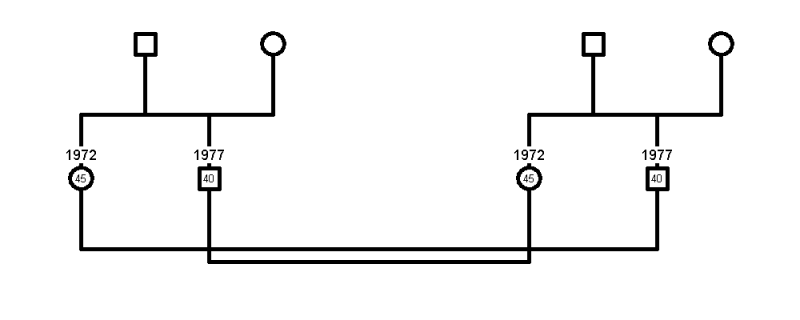|
By Jakk - Thursday, April 13, 2017
|
In genealogy research, standard convention is to have the father on the left and the mother on the right, and to display children in birth order. The Problem Spotter already looks for birth order, but does not check spouse position. I can understand why it does not do both, given the following situation:

When pairs of siblings marry, and genders and birthdates are in certain combinations (generally with at least one case of a wife being older than her husband), it is impossible to have the siblings in birth order *and* the husbands to the left of the wives. My question is for any (semi-)professional genealogists among us: which rule is more important for ease of reading the genogram? I discovered this situation while untangling a *very* large genogram imported from a .ged created with another program.
On a related note, being able to hide certain types of problems (or turn off looking for them) in the Problem Spotter would be a nice feature. I may have already mentioned that at some point since I began using the 2016 version. 
|
|
By maru-san - Thursday, April 13, 2017
|
|
I would as much as possible keep the children according to birth date. If it is necessary to draw a situation as shown I would use a hyperlink to keep the birth date order(on the same genomap).
|
|
By Jakk - Friday, April 14, 2017
|
|
I agree with maintaining the birth order for ease of locating individuals. However, the problem I have with hyperlinks in the current and previous versions of GenoPro is that they don't allow "flow through" of ancestor and descendant selections. From what I have heard, hyperlinked individuals will work somewhat differently in GenoProX... hopefully allowing what I have described. I currently have my entire family tree on a single genogram (well, two, one for my maternal family and one for my paternal family) because breaking it up further for the sake of legibility removes my ability to trace relationships with the "direct ancestors" and "direct descendants" selections.
|
|